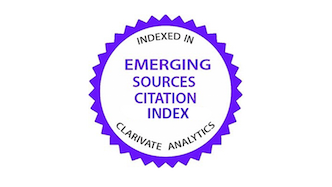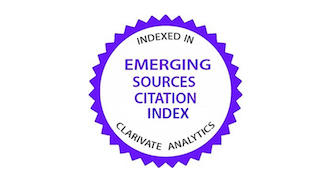Influence of cricket powder content and placebo effect on consumers’ acceptance of sweet biscuits
DOI:
https://doi.org/10.15517/psrdm251Keywords:
entomophagy, product development, sensory properties, protein contentAbstract
Introduction. Insect-based foods represent an emerging alternative to conventional food products. Insect powders are an important protein source with reduced ecological impact, though its incorporation into foods should consider effects on sensory properties and nutritional profiles. Objective. To assess consumer acceptance of sweet biscuits with cricket powder in Costa Rica, and evaluate the nutritional profiles of the products developed. Materials and methods. The study was conducted at the Universidad de Costa Rica, San José, Costa Rica in 2023. Sweet biscuits containing varying proportions of cricket powder (0.0, 12.5, and 26.0 %) were manufactured to evaluate both placebo effect and effect of cricket powder content influence on consumer acceptance, using two distinct panel groups. Demographic information, attitudes towards entomophagy, and perceived importance of protein consumption were collected via questionnaire. Proximate analysis and detailed fatty acid composition were performed on the three tested formulations with cricket powder. Results. Study populations demonstrated positive attitude towards insect consumption. The overall acceptance of the “No cricket” sample was significantly lower compared to both “Cricket” and “Commercial” samples. Biscuits containing 12.5% cricket powered achieved significantly higher overall sensory acceptance compared to the “26.0 % cricket powder” sample and showed no significant difference from the “Commercial” sample. Consumer segmentation was accomplished through Agglomerative Hierarchical Clustering. Primary nutritional differences between samples were observed in crude fat and specific fatty acids contents. Conclusions. Results indicate high consumer acceptance of sweet biscuits with cricket powder in Costa Rica. Nutritional analysis revealed progressive increases in crude fat and specific fatty acids contents corresponding to increased cricket powder incorporation.
References
Acosta-Estrada, B. A., Reyes, A., Rosell, C. M., Rodrigo, D., & Ibarra-Herrera, C. C. (2021). Benefits and challenges in the incorporation of insects in food products. Frontiers in Nutrition, 8, Article 687712. https://doi.org/10.3389/fnut.2021.687712
Aleman, R. S., Marcia, J., Pournaki, S. K., Borrás-Linares, I., Lozano-Sanchez, J., & Fernandez, I. M. (2022). Formulation of protein-rich chocolate chip cookies using cricket (Acheta domesticus) powder. Foods, 11(20), Article 3275. https://doi.org/10.3390/foods11203275
American Oil Chemists' Society. (2012). Official methods and recommended practices of the AOCS (6th ed.). AOCS Press.
Amoah, I., Cobbinah, J. C., Yeboah, J. A., Essiam, F. A., Lim, J. J., Tandoh, M. A., & Rush, E. (2023). Edible insect powder for enrichment of bakery products– A review of nutritional, physical characteristics and acceptability of bakery products to consumers. Future Foods, 8, Article 100251. https://doi.org/10.1016/j.fufo.2023.100251
Arama, D., Kinyuru, J., Ng'ang'a, J., Kiage-Mokua, B., Ochieng, B. O., & Tanga, C. M. (2023). Unraveling the physicochemical attributes of three cricket (Gryllus bimaculatus)-enriched biscuit products and implications on consumers’ preference and willingness to pay. LWT, 185, Article 115171. https://doi.org/10.1016/j.lwt.2023.115171
Artavia, G., & Granados-Chinchilla, F. (2021). Discrimination, quantitation, and identification of edible vegetable oil blends based on their fatty acid profiles. Akademik Gıda, 19(3), 244-256. https://doi.org/10.24323/akademik-gida.1011209
Association of Official Analytical Chemists. (2019). Official methods of analysis of AOAC International (21st ed.). AOAC International.
Bermúdez-Serrano, I. M., Quirós-Blanco, A. M., & Acosta-Montoya, Ó. (2023). Producción de insectos comestibles: retos, oportunidades y perspectivas para Costa Rica. Agronomía Mesoamericana, 34(3), Artículo 53052. http://dx.doi.org/10.15517/am.2023.53052
Berners-Lee, M., Kennelly, C., Watson, R., & Hewitt, C. N. (2018). Current global food production is sufficient to meet human nutritional needs in 2050 provided there is radical societal adaptation. Elementa: Science of the Anthropocene, 6, Article 52. https://doi.org/10.1525/elementa.310
Castro, M., & Chambers IV, E. (2019). Willingness to eat an insect based product and impact on brand equity: a global perspective. Journal of Sensory Studies, 34(2), Article e12486. https://doi.org/10.1111/joss.12486
Cortés-Herrera, C., Quirós-Fallas, S., Calderón-Calvo, E., Cordero-Madrigal, R., Jiménez, L., Granados-Chinchilla, F., & Artavia, G. (2021). Nitrogen/protein and one-step moisture and ash examination in foodstuffs: Validation case analysis using automated combustion and thermogravimetry determination under ISO/IEC 17025 guidelines. Current Research in Food Science, 4, 900-909. https://doi.org/10.1016/j.crfs.2021.11.015
Delwiche, J. (2023). Psychological considerations in sensory analysis. In S. Clark, M. Drake, & K. Kaylegian (Eds.), The sensory evaluation of dairy products (pp. 9-17). Springer. https://doi.org/10.1007/978-3-031-30019-6_2
Deroy, O., Reade, B., & Spence, C. (2015). The insectivore’s dilemma, and how to take the West out of it. Food Quality and Preference, 44, 44-55. https://doi.org/10.1016/j.foodqual.2015.02.007
Fish, W. (2018). Direct realism, disjunctivism, and screening off. In J. Smythies, & R. French (Eds.), Direct versus indirect realism (pp. 113-128). Academic Press. https://doi.org/10.1016/B978-0-12-812141-2.00008-8
Guillard, V., Broyart, B., Guilbert, S., Bonazzi, C., & Gontard, N. (2004). Moisture diffusivity and transfer modelling in dry biscuit. Journal of Food Engineering, 64(1), 81-87. https://doi.org/10.1016/j.jfoodeng.2003.09.014
Gutiérrez-Luna, K., Astiasarán, I., & Ansorena, D. (2022). Gels as fat replacers in bakery products: a review. Critical Reviews in Food Science and Nutrition, 62(14), 3768-3781. https://doi.org/10.1080/10408398.2020.1869693
Hénault-Ethier, L., Quinche, M., Reid, B., Hotte, N., Fortin, A., Normandin, É., De La Rochelle Renaud, G., Zadeh, A. R., Deschamps, M.-H., & Vandenberg, G. (2024). Opportunities and challenges in upcycling agri-food byproducts to generate insect manure (frass): A literature review. Waste Management, 176, 169-191. https://doi.org/10.1016/j.wasman.2023.12.033
Homann, A. M., Ayieko, M. A., Konyole, S. O., & Roos, N. (2017). Acceptability of biscuits containing 10% cricket (Acheta domesticus) compared to milk biscuits among 5-10-year-old Kenyan schoolchildren. Journal of Insects as Food and Feed, 3(2), 95-104. https://doi.org/10.3920/JIFF2016.0054
Hopkins, I., Farahnaky, A., Gill, H., Danaher, J., & Newman, L. P. (2023). Food neophobia and its association with dietary choices and willingness to eat insects. Frontiers in Nutrition, 10, Article 1150789. https://doi.org/10.3389/fnut.2023.1150789
Jensen, N. H., & Lieberoth, A. (2019). We will eat disgusting foods together – Evidence of the normative basis of Western entomophagy-disgust from an insect tasting. Food Quality and Preference, 72, 109-115. https://doi.org/10.1016/j.foodqual.2018.08.012
La Barbera, F., Verneau, F., Amato, M., & Grunert, K. (2018). Understanding Westerners’ disgust for the eating of insects: the role of food neophobia and implicit associations. Food Quality and Preference, 64, 120-125. https://doi.org/10.1016/j.foodqual.2017.10.002
Ochieng, B. O., Anyango, J. O., Khamis, F. M., Ekesi, S., Egonyu, J. P., Subramanian, S., Nduko, J. M., Nakimbugwe, D., Cheseto, X., & Tanga, C. M. (2023). Nutritional characteristics, microbial loads and consumer acceptability of cookies enriched with insect (Ruspolia differens) meal. LWT, 184, Article 115012. https://doi.org/10.1016/j.lwt.2023.115012
Ortolá, M. D., Martínez‐Catalá, M., Yuste del Carmen, A., & Castelló, M. L. (2022). Physicochemical and sensory properties of biscuits formulated with Tenebrio molitor and Alphitobius diaperinus flours. Journal of Texture Studies, 53(4), 540-549. https://doi.org/10.1111/jtxs.12692
Patton, M. Q. (2015). Qualitative research & evaluation methods (4th ed.). Sage Publications.
Ruby, M. B., Rozin, P., & Chan, C. (2015). Determinants of willingness to eat insects in the USA and India. Journal of Insects as Food and Feed, 1(3), 215-226. https://doi.org/10.3920/JIFF2015.0029
Sriprablom, J., Kitthawee, S., & Suphantharika, M. (2022). Functional and physicochemical properties of cookies enriched with edible insect (Tenebrio molitor and Zophobas atratus) powders. Journal of Food Measurement and Characterization, 16, 2181-2190. https://doi.org/10.1007/s11694-022-01324-2
Tan, H. S. G., Fischer, A. R. H., Tinchan, P., Stieger, M., Steenbekkers, L. P. A., & Van Trijp, H. C. M. (2015). Insects as food: Exploring cultural exposure and individual experience as determinants of acceptance. Food Quality and Preference, 42, 78-89. https://doi.org/10.1016/j.foodqual.2015.01.013
Udomsil, N., Imsoonthornruksa, S., Gosalawit, C., & Ketudat-Cairns, M. (2019). Nutritional values and functional properties of house cricket (Acheta domesticus) and field cricket (Gryllus bimaculatus). Food Science and Technology Research, 25(4), 597-605. https://doi.org/10.3136/fstr.25.597
Van Huis, A., & Oonincx, D. G. A. B. (2017) The environmental sustainability of insects as food and feed. A review. Agronomy for Sustainable Development, 37, Article 43. https://doi.org/10.1007/s13593-017-0452-8
Van Huis, A., & Rumpold, B. (2023). Strategies to convince consumers to eat insects? A review. Food Quality and Preference, 110, Article 104927. https://doi.org/10.1016/j.foodqual.2023.104927
Ververis, E., Boué, G., Poulsen, M., Pires, S. M., Niforou, A., Thomsen, S. T., Tesson, V., Federighi, M., & Naska, A. (2022). A systematic review of the nutrient composition, microbiological and toxicological profile of Acheta domesticus (house cricket). Journal of Food Composition and Analysis, 114, Article 104859. https://doi.org/10.1016/j.jfca.2022.104859
Yazici, G. N., & Ozer, M. S. (2021). Using edible insects in the production of cookies, biscuits, and crackers: a review. Biology and Life Sciences Forum, 6(1), Article 80. https://doi.org/10.3390/Foods2021-10974
Zajonc, R. B. (2001). Mere exposure: a gateway to the subliminal. Current Directions in Psychological Science, 10(6), 224-228. https://doi.org/10.1111/1467-8721.00154

Additional Files
Published
License
Copyright (c) 2025 Solène Cabagnols, Óscar Acosta-Montoya, Pilar Fallas-Rodríguez (Autor/a)

This work is licensed under a Creative Commons Attribution-NonCommercial-NoDerivatives 4.0 International License.
1. Proposed policy for open access journals
Authors who publish in this journal accept the following conditions:
a. Authors retain the copyright and assign to the journal the right to the first publication, with the work registered under the attribution, non-commercial and no-derivative license from Creative Commons, which allows third parties to use what has been published as long as they mention the authorship of the work and upon first publication in this journal, the work may not be used for commercial purposes and the publications may not be used to remix, transform or create another work.
b. Authors may enter into additional independent contractual arrangements for the non-exclusive distribution of the version of the article published in this journal (e.g., including it in an institutional repository or publishing it in a book) provided that they clearly indicate that the work was first published in this journal.
c. Authors are permitted and encouraged to publish their work on the Internet (e.g. on institutional or personal pages) before and during the review and publication process, as it may lead to productive exchanges and faster and wider dissemination of published work (see The Effect of Open Access).






























